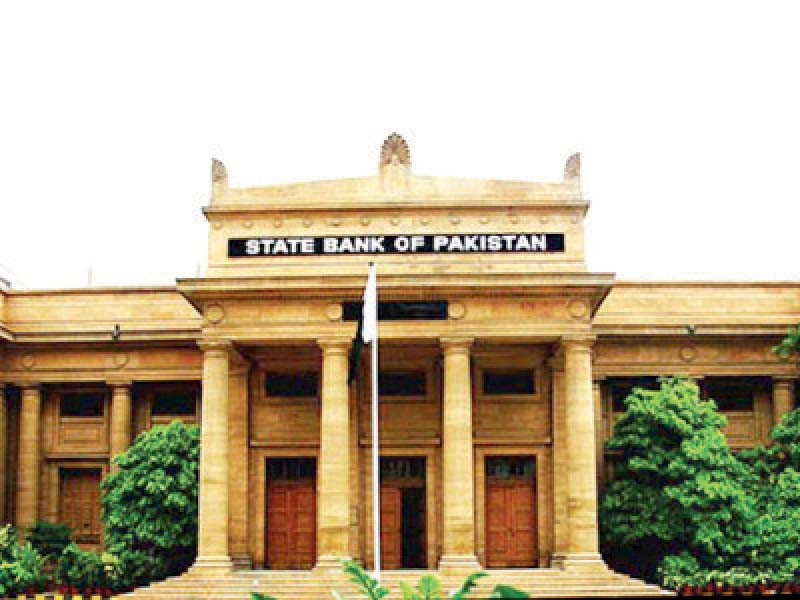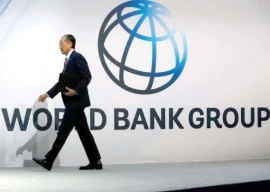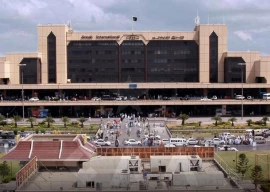
The State Bank of Pakistan (SBP) has finally taken a much overdue and corrective decision by increasing the policy rate, by a massive 250 bps to 12.25%. To put this move into context, such a large jump has not been witnessed in the 21st century.
Interestingly, the SBP has not given any forward guidance as it believes such a strong and decisive action speaks for itself. It also claims that future real interest rates are now in mildly positive territory while external financing needs for FY22 are fully met.
Unfortunately, this decision also highlights how behind the curve the SBP was in terms of monetary policy and the flawed logic of holding rates steady in January and March stands cruelly exposed. The market has once again won and forced the SBP to fall in line. This is evident from the unprecedented spread that existed between the policy rate (9.75%) and treasury bill/ KIBOR rates (~13.0%). This move was essentially filling in the gap the market had already created and was not as proactive as some tweets would have you believe.
Policy failures aside what can we expect going forward?
Well for one, the headline inflation numbers are not going to be pretty. The WPI (wholesale price index) which is a leading indicator for consumer prices is already averaging 24.3% over the last six months. CPI (consumer price index) was recorded at 12.7% in March and with the impending increase in petroleum and utility prices, it is highly likely that inflation will average in excess of 13% over the next six months. After that, the high base effect will kick in and we can expect CPI to drop to between 9-10% for FY23.
The delay in the International Monetary Fund (IMF) program will continue to keep foreign exchange reserves and the currency under pressure. Already we have seen a sharp decline in the rupee which has lost nearly 8% over the last two months and almost 20% during the current fiscal year. Borrowing through Eurobonds is not an option right now given that yields for these instruments are hovering above 15% in international markets. Assuming our debt repayments are completely rolled over, we still require approximately $1 billion per month to keep our reserves intact. Therefore a low cost deposit of $5 billion dollars from a friendly country should be actively sought to tide us over till we can get the IMF program back on track sometime in first half of fiscal year 2022-23 (July – December 2022).
The upcoming budget will probably bring in more austerity measures for the economy. So expect more exemptions to be withdrawn and more taxes to be imposed. Concurrently there will likely be a reduction in public development expenditure to keep the projected fiscal deficit from spiralling out of control.
While further rate hikes cannot be ruled out. It can be argued that the current rates are sufficient to achieve the policy objectives of price and external stability if we look past the coming few months. In fact interest rates could potentially start coming off again early next year.
Keep an eye on the Federal Reserve in the US. It has become increasingly hawkish given the record high inflationary pressures witnessed this year. A rapid increase in rates and a reduction in the Fed’s balance sheet may cool speculative demand for commodities especially oil. If that does occur, it will be a material positive for Pakistan as 70% of our import bill is directly impacted by commodity prices.
Panic in the media over a potential default is unwarranted. Macroeconomic stability can be achieved but to do so, we will have to undergo some painful adjustments over the coming months. The caretaker government is perhaps the only player that can take those tough decisions. A rapid de-escalation in political temperatures and moving forward to elections will go a long way in restoring market sentiment.
Mustafa O Pasha is an economist and portfolio manager who has been working in Pakistan’s capital markets for over a decade


1732003896-0/Zendaya-(1)1732003896-0-165x106.webp)
1731914690-0/trump-(26)1731914690-0-165x106.webp)
1732003946-0/BeFunky-collage-(70)1732003946-0-165x106.webp)





1730379446-0/WhatsApp-Image-2024-10-31-at-17-56-13-(1)1730379446-0-270x192.webp)





1731749026-0/Copy-of-Untitled-(3)1731749026-0-270x192.webp)






COMMENTS (1)
Comments are moderated and generally will be posted if they are on-topic and not abusive.
For more information, please see our Comments FAQ